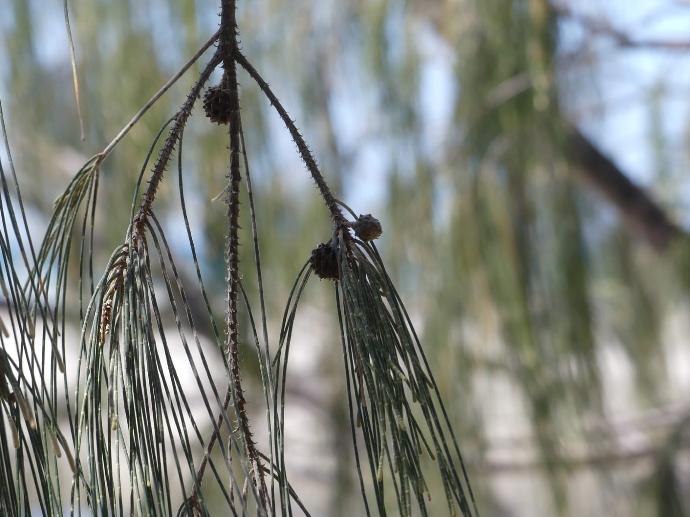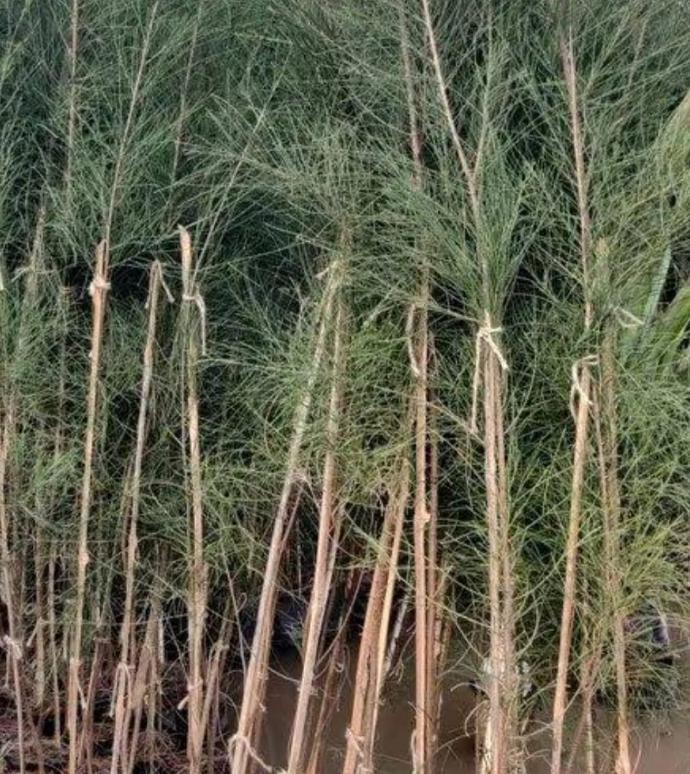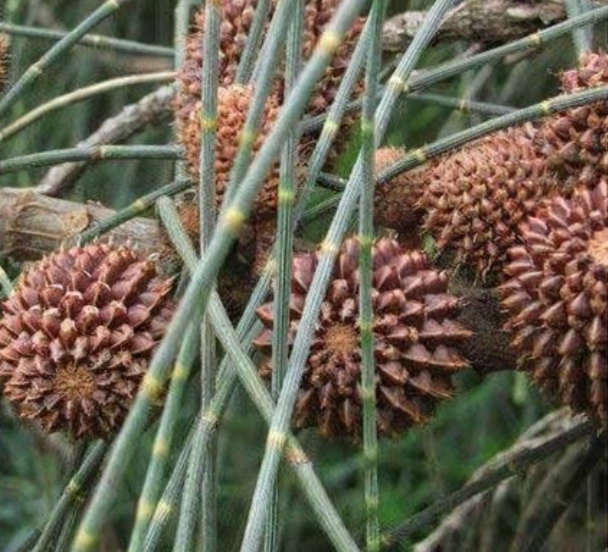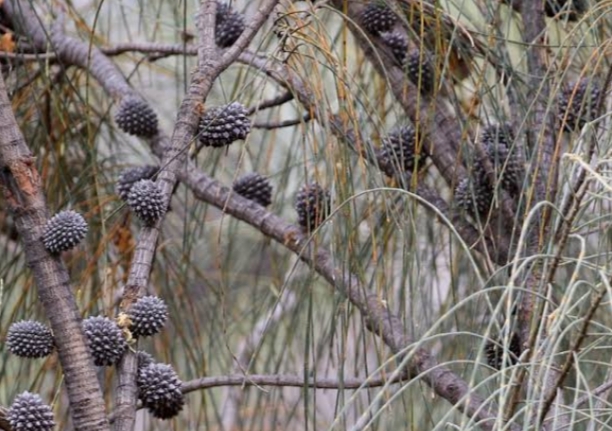Dropina Cassurina Plant
Dropina Cassurina, a specific plant, may have varying care requirements. Generally, provide well-draining soil, appropriate sunlight, and regular watering. Pruning and fertilizing practices may vary based on the specific characteristics of this plant.

Habit
Tree
Height
15 to 25 m
Growth
Fast
Soil
Well Drained, Sandy-loam
Shade
Full Sun
Moisture
Moist
Edible
No
Medicinal
Yes
Origin
Australia
Climatic Condition
Tropical, Subtropical
Temperature (°)
20 to 35
Humidity (%)
50 to 80 %
Potting media
Sandy mix
Fertilizers
Organic fertilizers
Watering
Low
Plant Weight
1-2 kg
Flowering Time
Rarely flowers
Soil Ph level
5.5 to 7.0
Water Ph level
6.0 to 7.5
Soil EC
0.4 to 1.5
Yield Per Plant
Timber production
NPK ratio
10:10:10
life Span
50-100 yrs
Health Benefits
Used for timber, erosion control
Suggested Grow Media or Potting Mix ?
50% loamy soil, 30% compost, 20% sand
Suggested Fertigation/Fertilizers
Fertilize every 4 weeks with a balanced fertilizer.
Common Diseases and Remedies
Leaf spot, Root rot, Rust, stem rot
Brown spots surrounded by yellow margin appear on the leaf. Roots get rotten due to over watering.
Avoid over watering and remove the effected part of the plant.
What Is A Dropina Cassurina Tree?
Dropina Cassurina, also known as Allocasuarina Dropina, is a small tree species native to Australia. It belongs to the Casuarina family and is characterized by drooping, needle-like leaves. This tree usually grows up to 5 meters in height and is commonly found in coastal sandy and heathland areas. Dropina Casulina is prized for its ornamental appearance and ability to withstand harsh coastal conditions, making it a popular choice for coastal gardens and landscaping projects. Additionally, its dense foliage provides habitat and protection for wildlife.
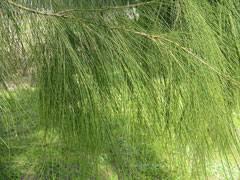
What are the different types of Dropina cassurina plant?
1. Casuarina equisetifolia (Australian pine):-
Native to Australia, Southeast Asia, and the Pacific Islands, this tree is known for its thin, pendulous branches that resemble pine needles. It is often planted in coastal areas to prevent erosion and as a windbreak.
2. Allocasuarina verticillata (Drooping Sheoak):-
Native to Australia, this species has narrow green needle-like leaves on drooping branches. It is valued for its decorative appearance and is often used in landscaping and greening projects.
3. Casuarina cunninghamiana (River Sheoak):-
This species lives along rivers and waterways in Australia and has a graceful weeping habit with thin, drooping branches. It tolerates a variety of soil types and is planted as an erosion control and shade tree.
4.Allocasuarina littoralis (black sheoak):-
Native to Australia, this species has black, furrowed bark and drooping, needle-like leaves. It is often cultivated for its timber and is also used for vegetation activities.
5. Casuarina glauca 'Cousin Itt':-
'Cousin Itt' is a variety of swamp oak with a compact, cascading habit that makes it suitable as a ground cover or wall cascading plant.
6. Casuarina cristata 'Belah':-
Belah is a variety of Belah sheoak known for its distinctive conical or wavy leaves that add texture and interest to the garden.
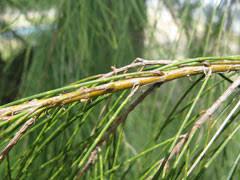
How to care for Dropina cassurina plant?
1. Location
Dropina cassurina, also known as Casuarina equisetifolia or Australian pine, is native to the coastlines of Southeast Asia, Australia, and the Pacific Islands. It typically grows in sandy coastal areas, dunes, and along beaches where it plays a crucial role in stabilizing sand and preventing erosion. Due to its ability to withstand salty conditions and its rapid growth, it's often planted in coastal regions worldwide for erosion control, windbreaks, and landscaping. Additionally, it's valued for its ornamental qualities, with its unique, needle-like foliage adding texture and interest to landscapes.
2. Sunshine
Dropina cassurina, also known as Casuarina equisetifolia or Australian pine, thrives in full sun to partial shade. It prefers direct sunlight for at least 6 hours a day, making it well-suited for sunny locations. In its native habitat, it commonly grows along coastal areas where it receives ample sunlight. This plant's ability to tolerate a wide range of light conditions makes it adaptable to various landscapes and climates, provided it receives sufficient sunlight for photosynthesis and healthy growth.
3. Soil
Dropina cassurina, also known as Casuarina equisetifolia or Australian pine, prefers well-draining soil that is sandy or loamy. This type of soil allows water to pass through easily, preventing waterlogging and ensuring good aeration for the plant's roots. In its native habitat, Dropina cassurina often grows in sandy coastal soils, but it can also thrive in a range of soil types, including poor soils with low fertility. The plant is tolerant of salty conditions, making it suitable for coastal areas where saltwater intrusion may occur. Overall, providing well-draining soil with good aeration is essential for the health and vigor of the Dropina cassurina plant.
4. Hydration
Dropina cassurina, also known as Casuarina equisetifolia or Australian pine, has moderate water needs once established. It prefers to be watered deeply but infrequently, allowing the soil to dry out slightly between waterings. Overwatering can lead to root rot and other issues, so it's essential to avoid soggy conditions. In its native coastal habitat, Dropina cassurina is adapted to periodic droughts and can withstand salty conditions, making it relatively drought-tolerant once it has developed a strong root system.
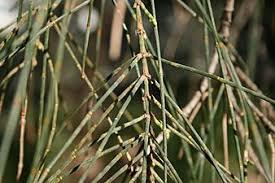
5. Nourishment
Dropina cassurina, also known as Casuarina equisetifolia or Australian pine, benefits from occasional fertilization to promote healthy growth. Using a balanced fertilizer during the growing season (typically spring and summer) can provide the necessary nutrients for optimal development. Look for a fertilizer specifically formulated for trees or shrubs and follow the manufacturer's instructions for application rates
6. Issues
While Dropina cassurina is tolerant of salty conditions, excessive salt buildup in the soil can cause leaf burn and stunted growth, especially in inland areas where salt spray is not naturally washed away by ocean breezes. Overwatering or poorly drained soil can lead to root rot, which manifests as wilting, yellowing leaves, and overall decline in the plant's health. It's important to ensure proper drainage and avoid waterlogged conditions. While relatively pest-resistant, Dropina cassurina may still attract pests like scale insects or aphids, which can cause damage if left untreated. Regular inspection and prompt treatment with appropriate methods or pesticides can help control pest infestations. Environmental stressors, such as drought, extreme temperatures, or physical damage, can lead to branch dieback in Dropina cassurina. Pruning affected branches and providing optimal growing conditions can help mitigate this issue.
What are the benefits of the Dropina cassurina plant?
Its deep and extensive root system helps prevent soil erosion, making it valuable for stabilizing coastlines, riverbanks, and slopes. Dropina cassurina is a nitrogen-fixing plant, meaning it can convert atmospheric nitrogen into a form that plants can utilize, thereby improving soil fertility. It is highly drought-tolerant once established, making it suitable for arid and semi-arid environments where water is scarce. Its dense foliage provides effective windbreaks, protecting crops and other vegetation from wind damage. The plant provides habitat and food for various wildlife species, including birds and small mammals. Dropina cassurina is often used in landscaping for its aesthetic appeal and ability to provide shade in parks, gardens, and urban areas.

FAQS about growing Dropina cassurina plant
1. What are the native habitats of the Dropina cassurina plant?
The Dropina cassurina plant, commonly known as the Casuarina or Australian Pine, is native to Australia, Southeast Asia, and some Pacific islands. It typically thrives in coastal areas, sandy soils, and regions with a warm, tropical to subtropical climate. Additionally, it can also be found in inland areas with well-drained soils.
2. How does Dropina cassurina contributes to soil stabilization?
Dropina cassurina develops a deep and extensive root system that can penetrate the soil deeply. These roots help bind the soil particles together, reducing the risk of erosion caused by wind or water runoff. The dense network of roots acts as a natural barrier, holding the soil in place and preventing it from being washed away during heavy rains or coastal erosion events. The tree's dense foliage and flexible branches also provide effective windbreaks, reducing the impact of wind erosion on soil surfaces. The canopy of Dropina cassurina helps regulate soil moisture levels by reducing evaporation and providing shade, which can minimize the risk of soil becoming too dry and susceptible to erosion.
3 .Can you explain the process of nitrogen fixation in Dropina cassurina plant?
Dropina cassurina forms a symbiotic relationship with nitrogen-fixing bacteria called rhizobia, which live in nodules on the plant's roots.When Dropina cassurina seeds germinate and develop into seedlings, the roots release chemical signals that attract the rhizobia bacteria. In response, the bacteria infect the root hairs and stimulate the formation of nodules. Within these nodules, the rhizobia bacteria convert atmospheric nitrogen (N2) into ammonium (NH4+), a form of nitrogen that can be readily utilized by plants. This process is facilitated by the enzyme nitrogenase, which is produced by the rhizobia bacteria. The ammonium produced by nitrogen fixation is then absorbed by the Dropina cassurina plant and used to synthesize proteins, nucleic acids, and other essential compounds necessary for growth and development. In return for providing the rhizobia bacteria with a suitable environment and nutrients, Dropina cassurina receives a direct source of nitrogen, which can be especially beneficial in nitrogen-poor soils.
4.How does Dropina cassurina compare to other plants in terms of drought tolerance?
Dropina cassurina develops a deep and extensive root system, which allows it to access water deep within the soil, even during extended periods of drought. This deep rooting enables the plant to withstand dry conditions more effectively than plants with shallower root systems. The plant has adapted various water conservation mechanisms, such as reducing water loss through transpiration by modifying leaf structures or closing stomata during periods of water stress. Dropina cassurina is capable of efficiently using available water resources due to its ability to adjust its growth and metabolic processes in response to drought conditions. This allows it to maintain essential functions while conserving water. Additionally, Dropina cassurina may exhibit drought avoidance strategies such as shedding leaves or entering a dormant state during prolonged drought periods to conserve resources and survive unfavorable conditions.
5. What are the environmental benefits of the planting Dropina cassurina plant?
Dropina cassurina's extensive root system helps prevent soil erosion, particularly in coastal areas, sandy soils, and slopes, thereby protecting valuable land and infrastructure.The plant has the ability to fix atmospheric nitrogen, improving soil fertility and reducing the need for synthetic fertilizers in agricultural and landscaping applications. Like all plants, Dropina cassurina absorbs carbon dioxide (CO2) from the atmosphere during photosynthesis, helping to mitigate climate change by sequestering carbon in its biomass and in the soil. Dropina cassurina provides habitat and food for various wildlife species, including birds, small mammals, and insects, enhancing local biodiversity and ecological resilience. The deep root system of Dropina cassurina can help improve water infiltration and retention in soils, reducing runoff and enhancing groundwater recharge, particularly in areas prone to drought or water scarcity. The dense foliage and flexible branches of Dropina cassurina make it effective for creating windbreaks and shelterbelts, protecting crops, buildings, and other vegetation from wind damage.
